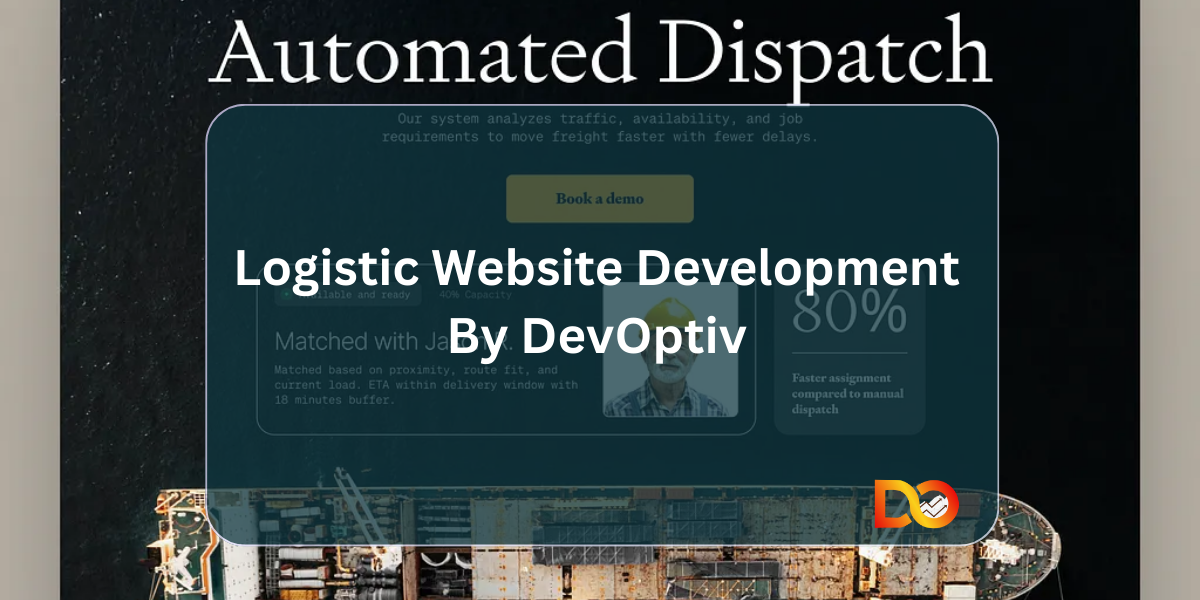The logistics industry is experiencing unprecedented digital transformation, making logistics website development a critical investment for companies seeking competitive advantage. As supply chains become increasingly complex and customer expectations rise, businesses must leverage sophisticated web solutions to streamline operations, enhance visibility, and deliver exceptional service.
Understanding the Logistics Digital Landscape
Modern logistics website development encompasses far more than basic company information. Today’s logistics websites serve as comprehensive digital ecosystems that integrate multiple stakeholders, automate processes, and provide real-time insights across the entire supply chain. The industry demands solutions that can handle massive data volumes, support complex workflows, and maintain 99.9% uptime.
Core Industry Requirements for Logistics Websites
Real-Time Tracking and Visibility
Logistics companies require websites with advanced tracking capabilities that provide customers and internal teams with instant access to shipment status, location data, and estimated delivery times. This functionality demands robust backend infrastructure and seamless API integrations with transportation management systems.
Multi-Modal Transportation Support
Effective logistics website development must accommodate various transportation modes including trucking, rail, air, and ocean freight. The platform should seamlessly switch between different carriers and provide unified tracking regardless of the transportation method used.
Compliance and Documentation Management
The logistics industry operates under strict regulatory requirements across different regions and transportation types. Websites must incorporate automated compliance checking, document generation, and audit trail capabilities to ensure adherence to international trade regulations, hazardous materials handling, and customs requirements.
Scalable Architecture
Logistics operations often experience seasonal fluctuations and rapid growth. Website architecture must support scaling from hundreds to millions of transactions without performance degradation, requiring cloud-based infrastructure and microservices architecture.
Common Industry Challenges and Digital Solutions
Challenge 1: Fragmented Communication
Problem: Traditional logistics operations rely on phone calls, emails, and paperwork, leading to miscommunication and delays. Solution: Integrated communication portals within logistics websites enable automated notifications, real-time chat systems, and centralized message threading between all stakeholders.
Challenge 2: Limited Supply Chain Visibility
Problem: Lack of end-to-end visibility creates blind spots that impact decision-making and customer satisfaction. Solution: Advanced logistics website development incorporates IoT integration, GPS tracking, and predictive analytics to provide comprehensive supply chain visibility.
Challenge 3: Manual Process Dependencies
Problem: Manual data entry and paper-based processes increase errors and operational costs. Solution: Automated workflow systems, electronic document interchange, and AI-powered process optimization reduce manual intervention and improve accuracy.
Challenge 4: Customer Experience Gaps
Problem: Customers demand Amazon-like tracking and communication but receive limited visibility. Solution: Customer-facing portals with self-service capabilities, mobile optimization, and proactive communication systems enhance the overall experience.
Categorizing Logistics Websites: From Informational to SaaS
Informational Websites
Basic logistics websites serve as digital brochures, providing company information, service descriptions, and contact details. These entry-level solutions cost between $5,000-$15,000 and typically include responsive design, basic SEO optimization, and content management systems.
Enhanced Business Websites
Mid-tier logistics website development incorporates quote request systems, basic tracking features, and customer portals. These solutions range from $15,000-$50,000 and include CRM integration, automated email systems, and mobile applications.
Enterprise Logistics Platforms
Comprehensive enterprise solutions feature advanced transportation management, warehouse management integration, and multi-tenant capabilities. Investment ranges from $100,000-$500,000, including custom API development, enterprise security features, and advanced analytics dashboards.
Software-as-a-Service (SaaS) Platforms
Full-scale SaaS logistics website development creates multi-tenant platforms serving multiple logistics companies. These solutions require $500,000+ investment and include subscription management, white-label capabilities, marketplace functionality, and advanced AI/ML features.
Essential Features for Modern Logistics Websites
Transportation Management Integration
Seamless integration with Transportation Management Systems (TMS) enables automated route optimization, carrier selection, and load planning directly through the website interface.
Warehouse Management Connectivity
Integration with Warehouse Management Systems (WMS) provides real-time inventory visibility, automated picking optimization, and cross-docking capabilities.
Financial Integration
Automated invoicing, payment processing, and financial reporting through integration with accounting systems streamline financial operations and improve cash flow.
Analytics and Reporting
Advanced logistics website development incorporates business intelligence tools providing insights into key performance indicators, cost analysis, and operational efficiency metrics.
Future Trends in Logistics Website Development
Artificial Intelligence Integration
AI-powered demand forecasting, route optimization, and predictive maintenance capabilities are becoming standard features in advanced logistics website development projects.
Blockchain Implementation
Distributed ledger technology enhances transparency, reduces fraud, and streamlines documentation processes across complex supply chains.
Internet of Things (IoT) Connectivity
Integration with IoT sensors and devices provides real-time monitoring of cargo conditions, vehicle performance, and facility operations.
Conclusion
Logistics website development represents a strategic investment that can transform operational efficiency, customer satisfaction, and competitive positioning. Success requires understanding specific industry requirements, implementing appropriate technology solutions, and choosing the right development approach based on business objectives and budget constraints. Companies that invest in comprehensive digital solutions today will be best positioned to capitalize on tomorrow’s logistics opportunities.
The key to successful logistics website development lies in balancing immediate operational needs with long-term scalability requirements while ensuring seamless integration across the entire logistics ecosystem.
Ready to Transform Your Logistics Operations?
Transform your logistics business with cutting-edge logistics website development solutions tailored to your specific needs. DevOptiv specializes in creating powerful, scalable logistics platforms that streamline operations, enhance visibility, and drive growth. From informational websites to comprehensive SaaS platforms, our expert team delivers solutions that give you a competitive edge.
Contact DevOptiv today to discuss your logistics website development project and discover how we can help you build the digital infrastructure your business needs to thrive in the modern logistics landscape.







